Civil Defense Fallout Shelter Sign (ca. 1960s)
The "Posting Fallout Shelter Signs Handbook" FG-C-8.1 (June 1964) describes the sign below right as follows: "Exterior sign, Type I, size 14" x 20", aluminum, 0.025" thick with partially reflectorized surface and overlays. Used to mark facility entrances." The interior signs were made of steel.
The same document describes the sign shown below as follows: "Interior sign, Type II, size 10" x 14", galvanized steel, 0.018" thick, with partially reflectorized surface and overlays. Use inside facilities to mark access routes to shelter areas and the shelter area itself."
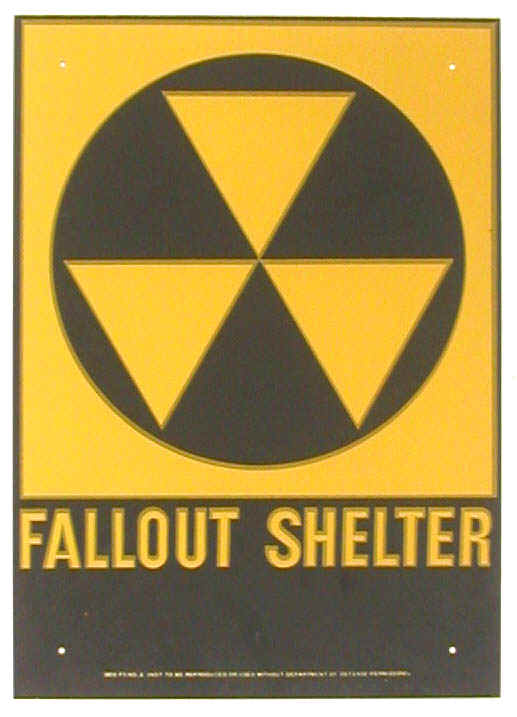
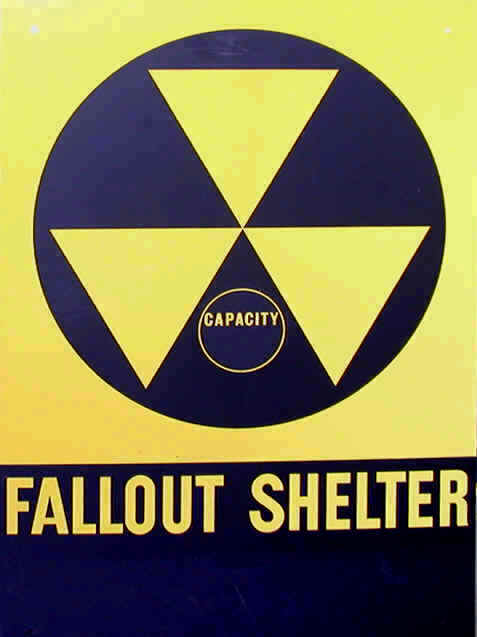
The Office of Civil Defense originally intended fallout shelters to use the radiation warning symbol (yellow background with a magenta circle in the center of three magenta blades) but this idea was rejected because a fallout shelter represents safety whereas the radiation warning symbol represents a hazard. The above version of the national fallout shelter sign was introduced to the public by the Defense Department on December 1, 1961. It was intended to only be used with federally approved shelters. Unlike this example, these signs often had yellow arrows below the words "fallout shelter" to indicate the direction to the shelter. In 1962, contracts were negotiated for the production of 400,000 aluminum outdoor signs and one million steel signs for indoors.
The following description is taken from a draft version of a fact sheet entitled "National Fallout Shelter Sign."
"In awarding the contract for design of the sign to graphic arts studios it was designated that the services of a psychologist be obtained to recommend a visual symbol that could be easily identified and remembered. The sign had to meet the psychological requirements of simplicity, easy identification, retention and arresting color combination."
"It had to be simple enough to be easily identified by children, non-English speaking persons or others who may not be able to read. The color combination, yellow and black, is considered as the most easily identified attention getter by psychologists in the graphic arts industry. The sign can be seen and recognized at distances up to 200 feet."
"The shelter symbol on the sign is a black circle set against a yellow rectangular background. Inside the circle, three yellow triangles are arranged in geometric pattern with the apex of the triangles pointing down."
"Below the fallout symbol, lettered in yellow against black, are the words Fallout Shelter in plain block letters. Yellow directional arrows are located directly underneath the lettering which will indicate the location of the shelter."
I would like to thank Bill Geerhart for providing me with the draft fact sheet and his tireless efforts tracking this information down.
Bill is by far the most authoritative source for information about the fallout shelter symbol/sign. Please refer to his blog at the following link:
http://conelrad.blogspot.com/2011/06/indelible-cold-war-symbol-complete.html
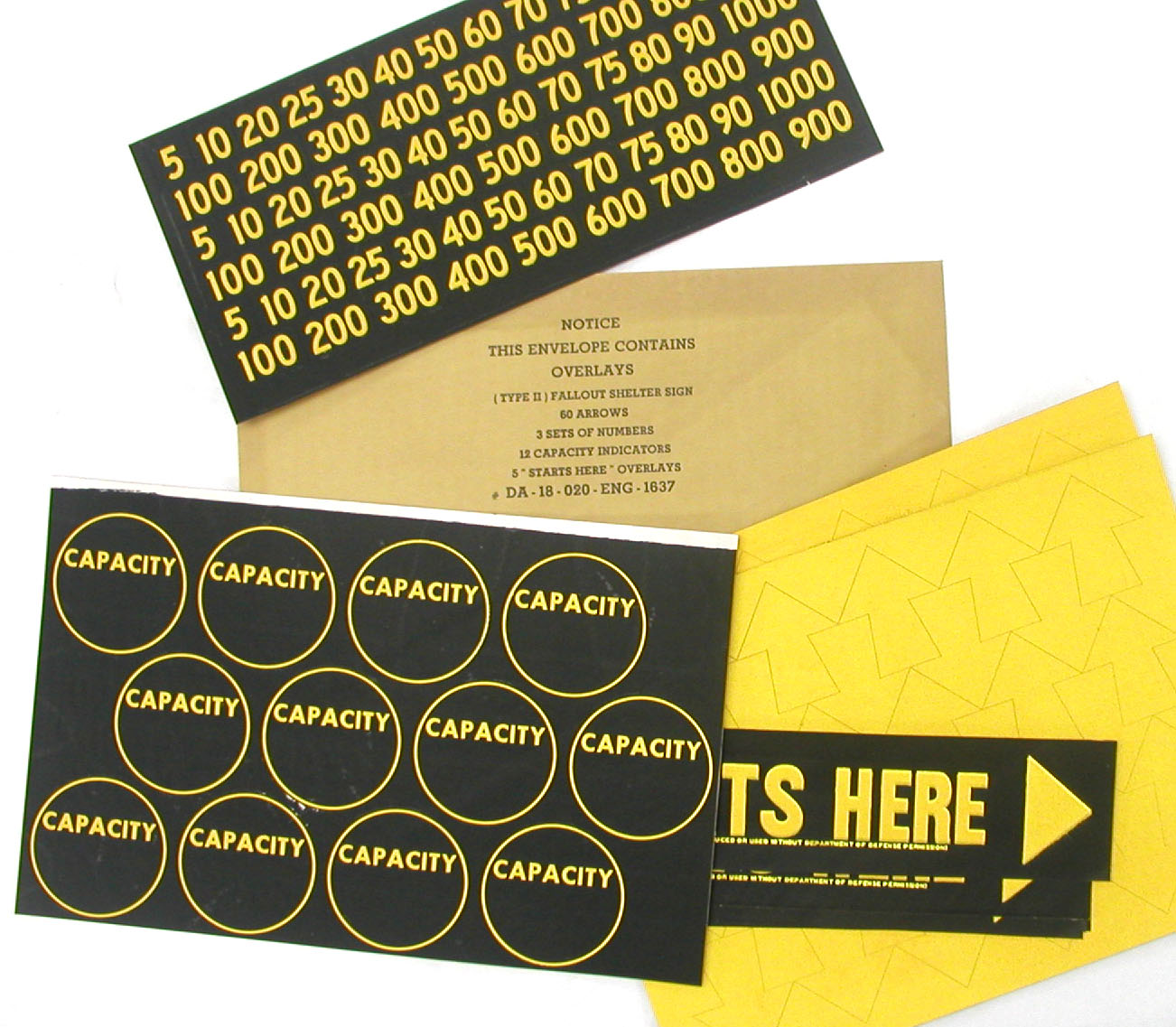
The above photo shows the adhesive-backed overlays that came with a set of 40 Type II fallout shelter signs. As the text on the manila envelope indicates, there are 60 arrows, three sets of numbers, 12 capacity indicators and five "Starts Here" overlays. The numbers were to be affixed inside the capacity circle overlay to indicate the maximum occupancy for the shelter. I would like to thank Kevin Hicks for kindly providing the signs and, of course, the overlays.
The following images show the nine different versions of the 6 3/4" x 9 3/4" adhesive-backed fallout shelter signs.
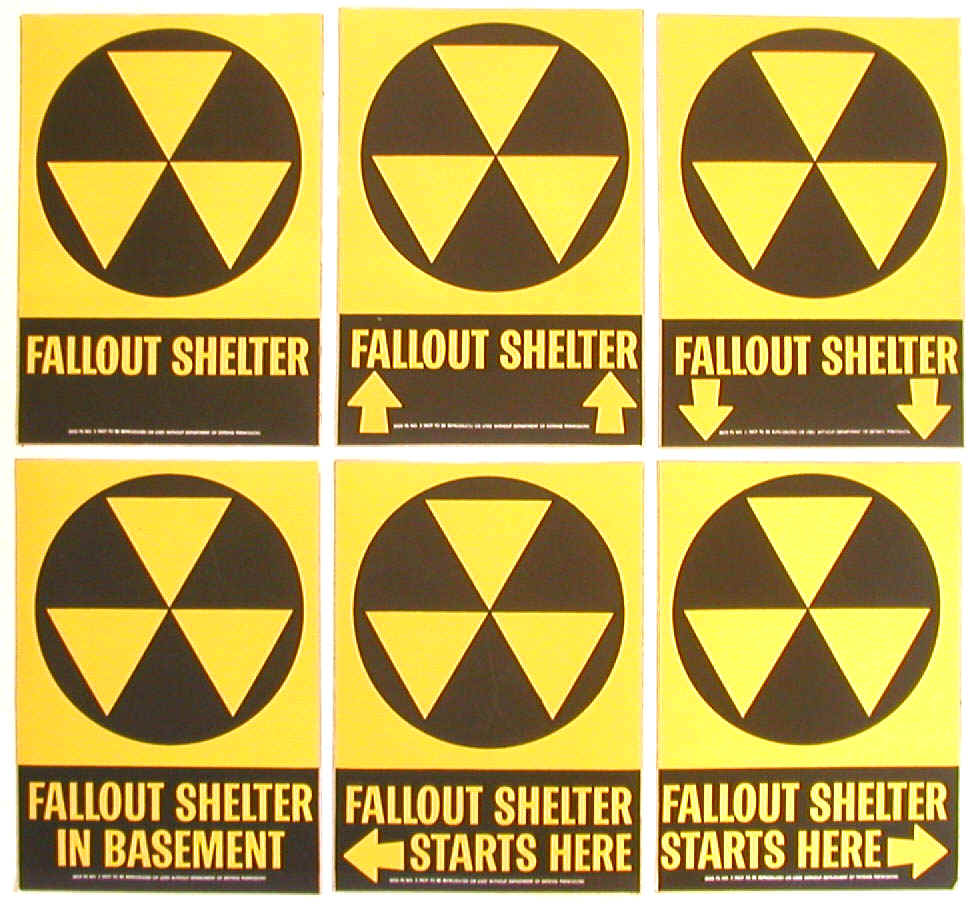
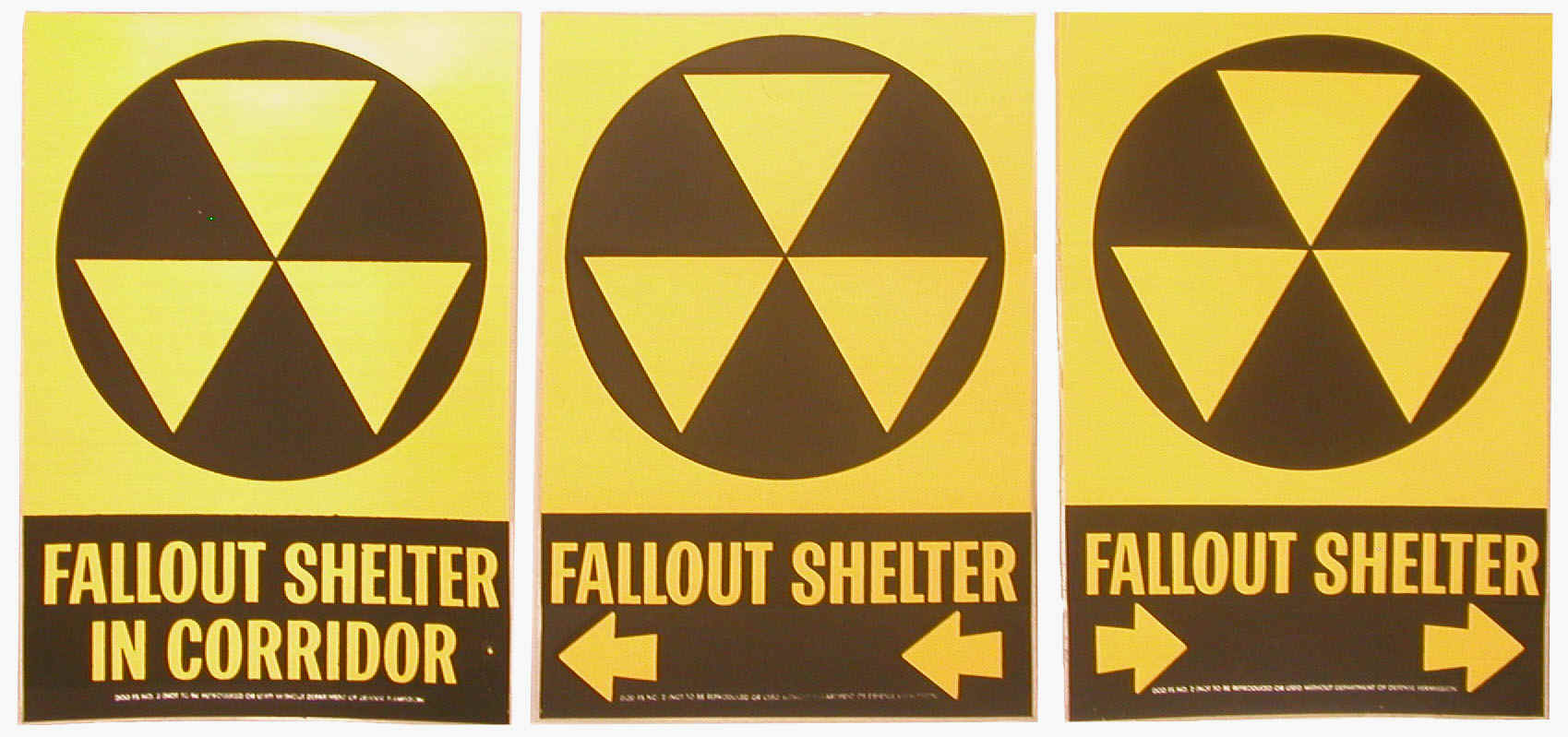
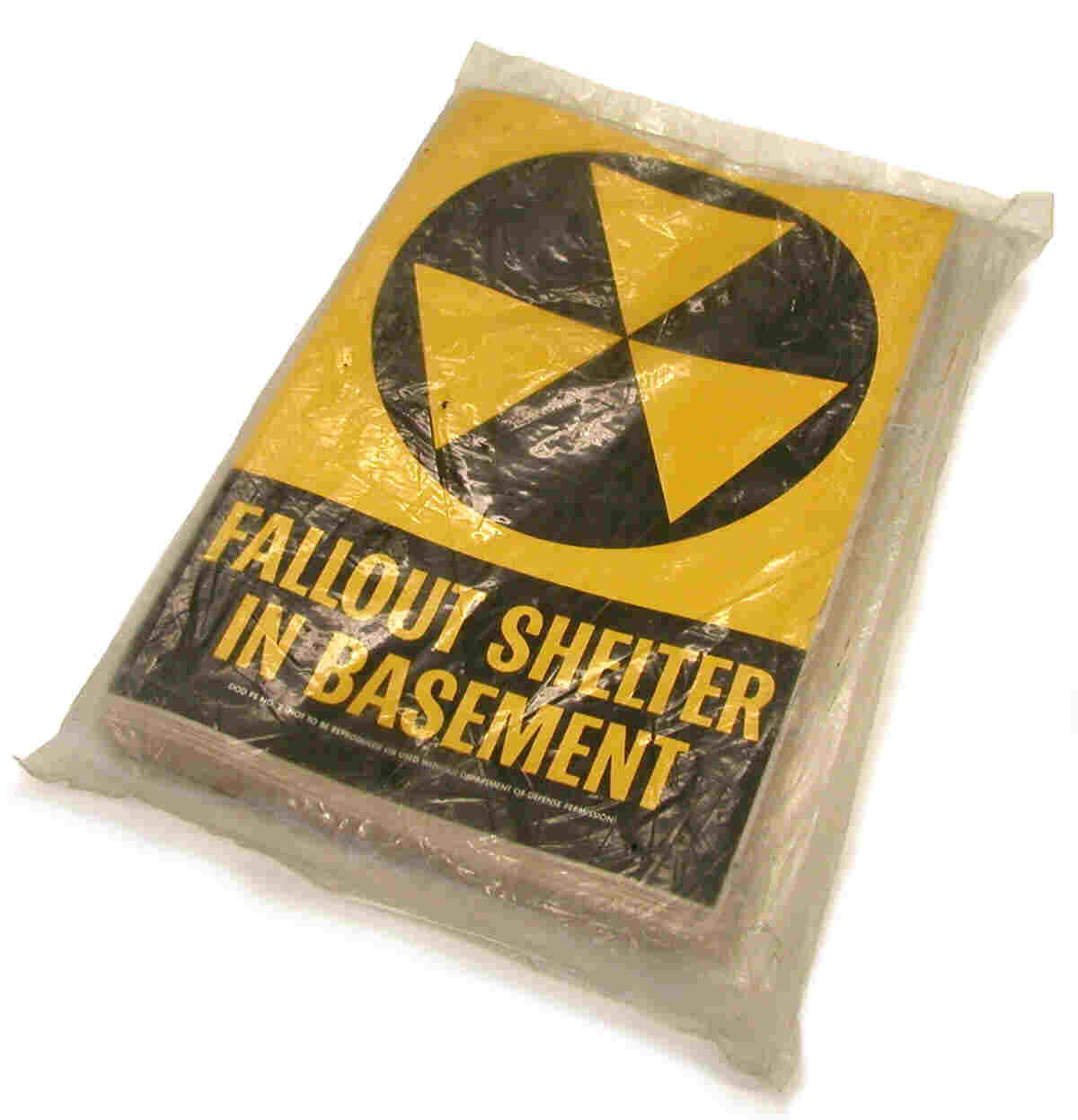
The photo to the right shows a package of fifty "Fallout Shelter in Basement" signs.
References
- AP press release appearing in the Ironwood Daily Globe, December 2, 1961.
- Draft fact sheet "National Fallout Shelter Sign". 1383-61.
- Saul Harris's additional comments to the paper "A Brief History of a 20th Century Danger Sign" by Stephens and Barrett that appeared in "Health Physics: A Backward Glance" Kathren and Ziemer published by Pergamon Press, 1980.
